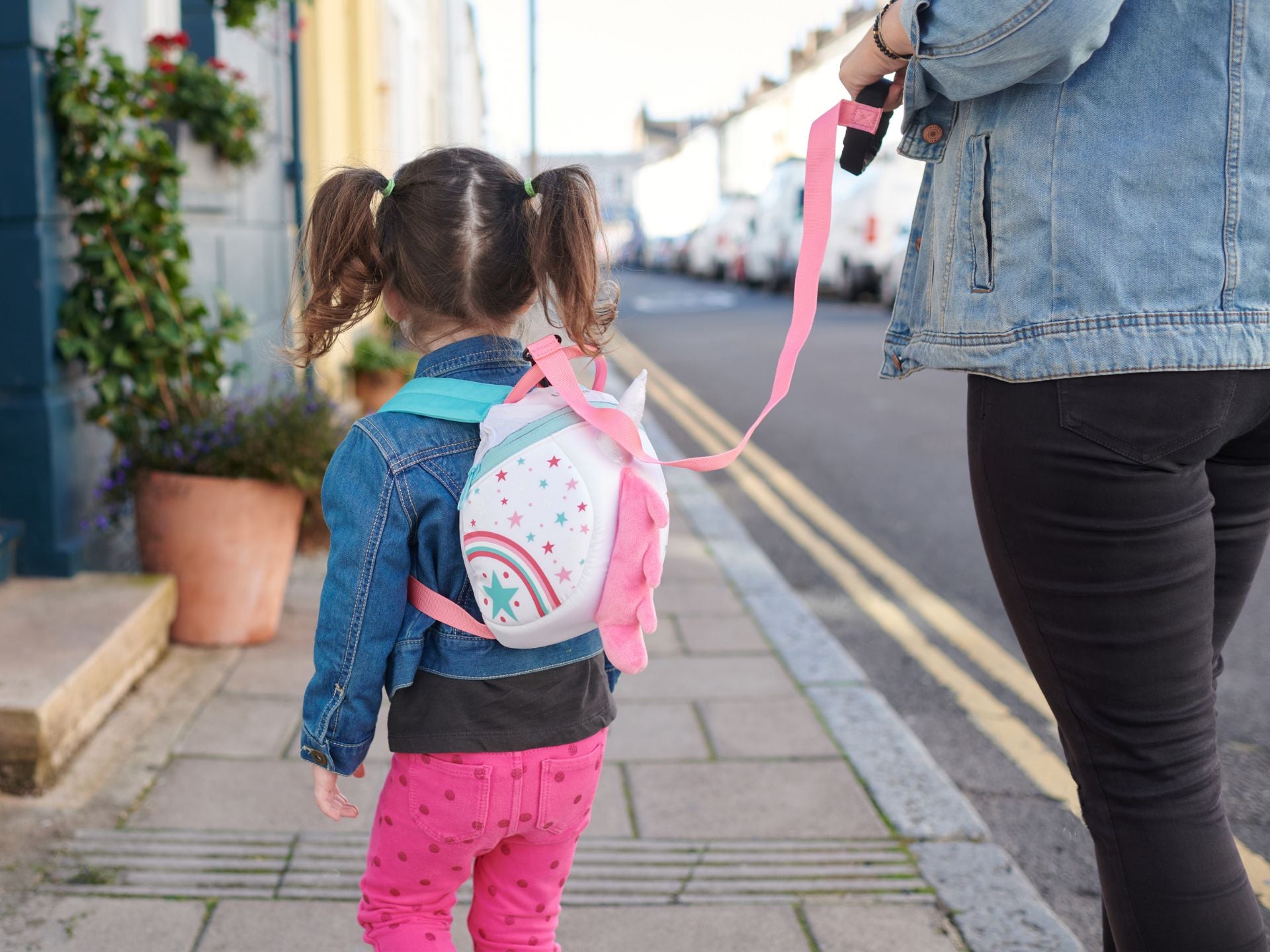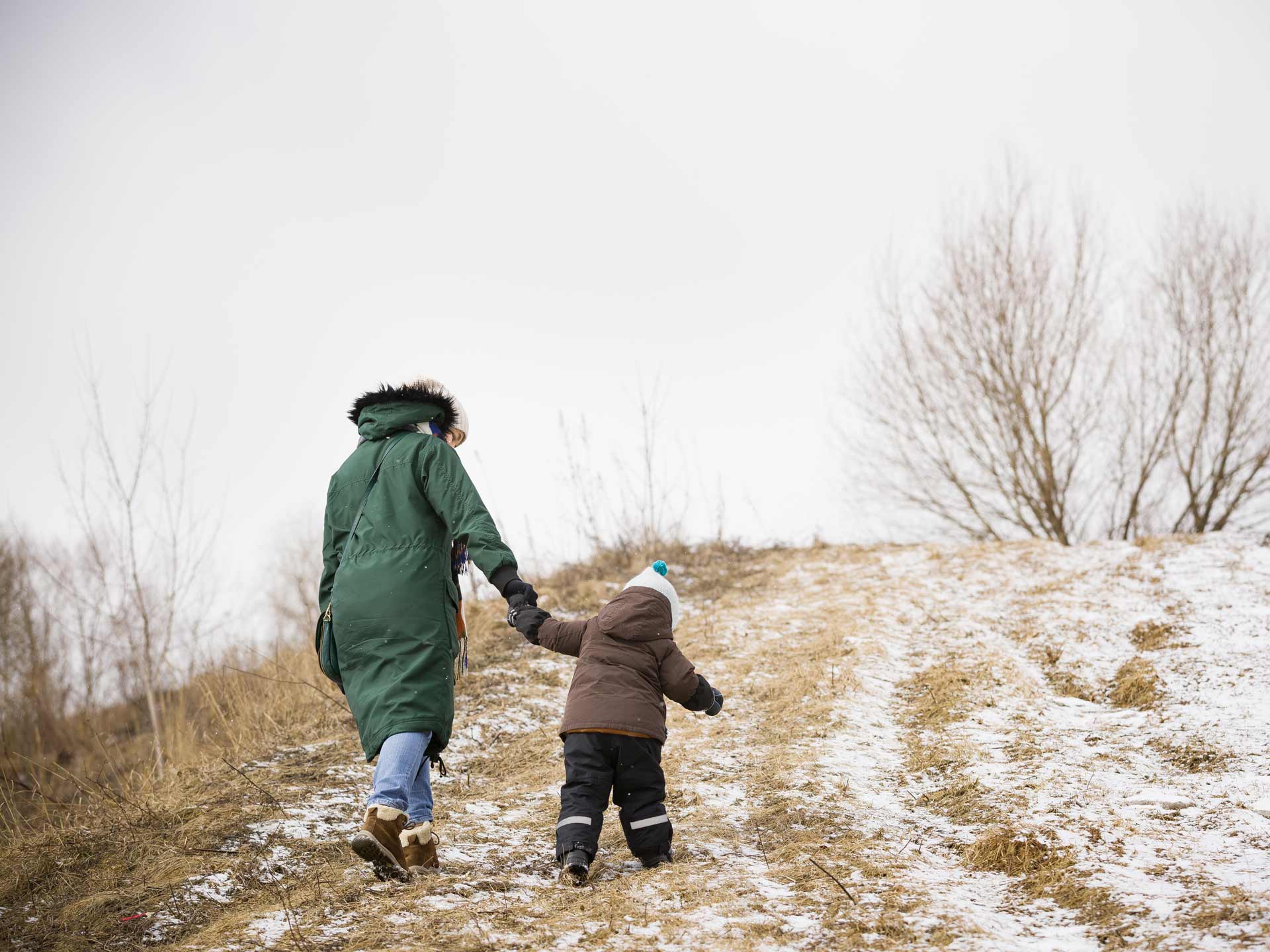Teach Your Children Road Safety
- Blog

This Road Safety Week, teach your children the essentials of road safety and how to cross the road safely.
Outdoor exploration is our driving force because we know that it is vital for health and wellbeing, and with our outdoor safety hat on, here we delve into the detail of how to introduce young children to road safety in their local community.
Road awareness is an essential skill and serves as an excellent opportunity to help your child develop risk assessment skills. Some of these tips might seem obvious but busy communities are distracting and fascinating for little minds, so it’s always worth refreshing yourself on how to embed safety practices from a young age. Below, we share tips for teaching your child road safety in a positive and engaging way.

Tip 1: Start Early
When it comes to the safety of our little ones, there's no such thing as starting too early. When your child begins their adventures near a roadside, embed the practice of walking along the side of the pavement furthest from traffic. In the event that your child isn’t so keen to hold hands, or finds it easy to slip from your grip, consider using the LittleLife Toddler Backpack with Rein , LittleLife Reins for Toddlers, or a simple child wrist strap for added safety and security for inquisitive little ones who crave the feeling of freedom. These accessories keep your hands in control and keep those little hands in reach and safety. Our range includes a selection of different colours and styles which provide you with that important balance of giving your little one a sense of freedom and independence while keeping them close by and safe.
Tip 2: Introducing terminology… but make it a game!
To articulate road safety in a way that makes it easy for young children to understand, using basic and relatable words, perhaps those that they will have heard in conversation before. For example, terms such as “pavement” and “kerb” are used to explain the boundaries between the safety of the footpath and the potential danger of the road. Also, you can augment the learning process with an interactive game by letting them press the button at the pedestrian crossing and then ask them to guess when they think the green man will come on before setting off across the road together.
Tip 3: The Four Step Sequence to Safety: "Stop, Look, Listen, and Think"
Relay the protocol for crossing the road by frequently repeating the four-word sequence ‘Stop, Look, Listen, Think’. This embeds a memorable practice to develop your child’s built-in sense of risk and road safety awareness. Make sure to model with exemplary behaviour so your child can copy you and use terminology that has been properly explained to them. Through practical learning, you can help toddlers develop crucial road safety skills, ensuring this sequence becomes a natural habit. Here we explain the Stop, Look, Listen, Think Sequence:
- STOP prior to reaching the pavements’ edge: Explain why it is imperative to pause and not immediately step onto the road before they have taken the necessary precautions.
- LOOK right, then left, then right for all vehicles: Guide your toddler to be aware of vehicles coming in both directions by taking time to look right, then left and then right again. Highlight the importance of looking right first as those vehicles are closest to where they are standing on the pavement. Then encourage them to look to the left to check for the traffic on the side of the road furthest away. Look right one final time, to be extra sure there are no approaching vehicles, before proceeding to cross.
- LISTEN out for vehicles! You might hear the sound before you can see: Explain to your little one that whilst it is most important to look, it is also incredibly important to listen carefully for any vehicles that might be in the vicinity, reminding them that they might hear vehicles before they can see them. Staying alert and fully taking stock of their surroundings by using all their senses should be emphasised whenever they are out and about.
- THINK – Can I cross safely?: Constantly assessing the pace of the traffic and relating it back to the time it takes you to cross is a skill that your toddler will develop over time. Challenge them to tell you when they think it’s safe to cross. Most importantly, explain to them that there is no rush and that it is always better to be patient and wait until there is an opportunity to cross with a comfortable amount of time.
Recap on Safety Habits
- Explain the difference in walkways those that are designed as a safer place to walk (footpaths) and unsafe places (roads) as well as everything in between.
- Position of the parent between road and child.
- Form the hand-holding habit with a known grown-up when roadside or sport a Backpack with Rein when walking together and little one prefers more independence.
- Embed the "Stop, Look, Listen, and Think" sequence.
- Identify the safest spot to cross, such as zebra crossings or pedestrian crossings, and explain how each crossing functions to keep them safe.
- "Dress bright and easy to see", highlight the utility of dressing in clothing or reflective gear that makes you easiest to spot and why this makes them safer.
Learning road awareness and how to cross the road safely is a challenging learning process for little ones with active minds. It’s a continuous journey throughout childhood so start early and regularly reinforce these messages in an engaging and interactive way, to keep them concentrating! Together, we can nurture our toddlers to grow up with innate sense road safety awareness. Above all, keep safe and enjoy life’s outdoor adventures together!



